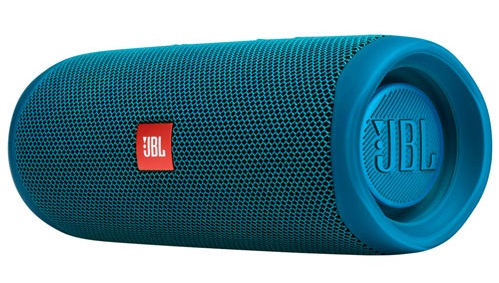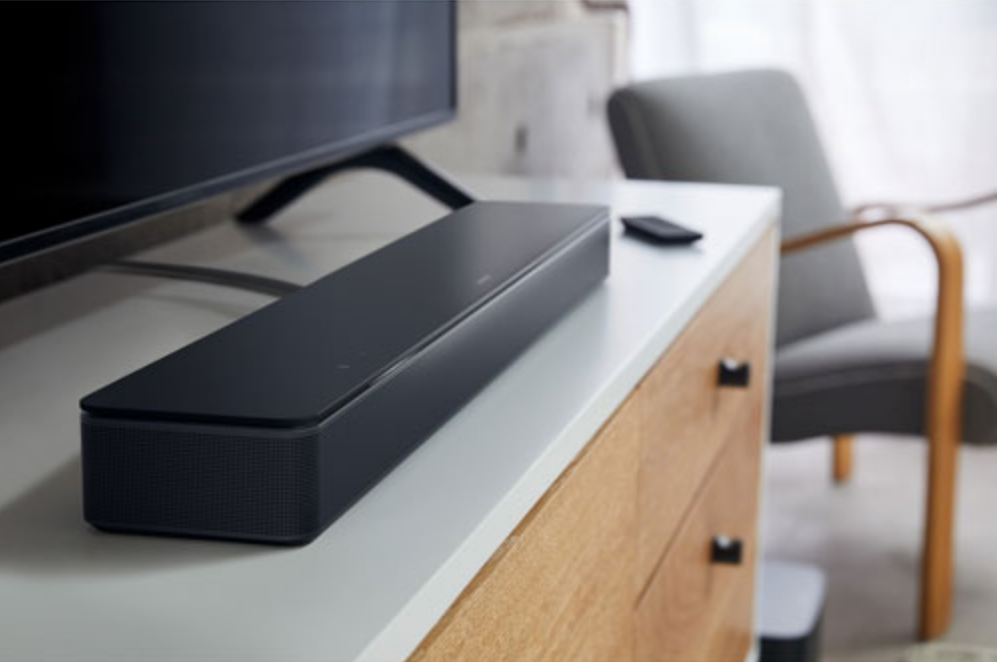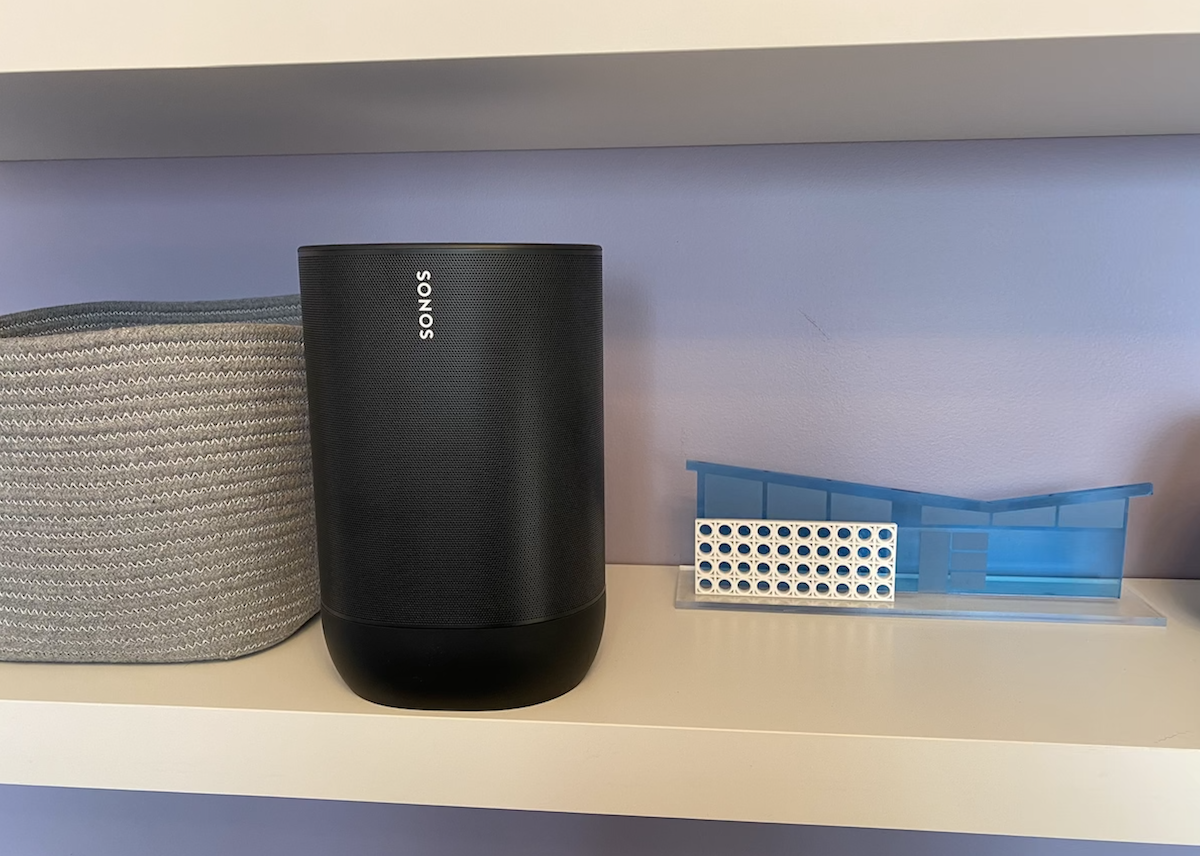
Thanks to the outstanding quality of wireless speakers today, there’s almost no need for wired versions any more. If you’re shopping for new wireless home theatre or multiroom speakers, you may be seeing two options: wireless Wi-Fi speakers and wireless Bluetooth speakers. Both will play music without stringing up speaker wire, but what’s the difference between wireless Wi-Fi speakers and wireless Bluetooth speakers? Do they have different applications or limitations in the home, and which one should you choose?
What is the difference between Bluetooth & Wi-Fi in wireless home audio?
 Bluetooth for music at home
Bluetooth for music at home
Bluetooth technology makes a one-to-one or direct connection between two electronic devices, in this case a wireless speaker and your smartphone, tablet or computer. With this digital link you can adjust your audio, volume, and more.
However Bluetooth has more limited bandwidth capable of streaming smaller files like MP-3 or other highly compressed music. Bluetooth also requires the speaker to be close to your smart device, usually 20-30 feet maximum, and Bluetooth speakers, generally speaking, tend to be less powerful than their Wi-Fi counterparts.
 Bluetooth is, however, the only real option for a speaker that you want to take with you once you leave the house. There are a wide variety of quality portable wireless Bluetooth speakers for both indoors and out. Check out Sony portable Bluetooth speakers, or JBL, just to name a couple of brands. There’s also a whole lineup of waterproof Bluetooth speakers too.
Bluetooth is, however, the only real option for a speaker that you want to take with you once you leave the house. There are a wide variety of quality portable wireless Bluetooth speakers for both indoors and out. Check out Sony portable Bluetooth speakers, or JBL, just to name a couple of brands. There’s also a whole lineup of waterproof Bluetooth speakers too.
But is inferior if the intent is to use it primarily in your home.
 Wi-Fi for music at home
Wi-Fi for music at home
Conversely, Wi-Fi speakers piggyback on your home’s Wi-Fi connection to create the connection from smart device to speaker. This type of connection is stronger, more stable and generally has a wider reach across bigger spaces.
If you open your Wi-Fi settings right now you can probably see a bunch of your neighbours’ networks as options to connect to, even though many of them will be hundreds of feet away. The range of a home network is quite large, and often extends beyond the four walls of your home.
A Wi-Fi home audio network, therefore, provides you with about 100 feet of range indoors and upwards of 300 feet outdoors. After experiencing this flexibility, the 20-30 feet of range you get from Bluetooth will feel like cold hard shackles. With Wi-Fi, you can actually keep your phone in your pocket as you stream music rather than leaving it next to your Bluetooth speaker in fear of the connection dropping. (You can also take calls, text or email without any sounds transferring to your speakers.)
The increased bandwidth of Wi-Fi offers allows for more information to be streamed wirelessly throughout our homes. If you think of Wi-Fi bandwidth as a pipeline, Wi-Fi offers a pipe that is ten times the size of Bluetooth. This opens up the door for higher resolution audio files to be streamed throughout the home, resulting in higher quality audio.
 Wi-Fi audio also allows for more complex set-ups where you can have different music streaming in different rooms, for example. Sonos is a great example of this kind of set-up, where a variety of speakers can be managed from the Sonos app, across the home, and Bose is also another major player in this space.
Wi-Fi audio also allows for more complex set-ups where you can have different music streaming in different rooms, for example. Sonos is a great example of this kind of set-up, where a variety of speakers can be managed from the Sonos app, across the home, and Bose is also another major player in this space.
Why choose a Wi-Fi speaker over Bluetooth? Bit Rate
Digital music is highly compressed, whether that is on a CD or MP3. The greater the compression, the greater the loss of detail and dynamic range. While some consumers may not be able to detect much of a difference between music being broadcast at CD compressed (16 bit) vs. uncompressed (24 bit) rates, the science behind high res audio is compelling. Higher bit rates allow that detail and dynamic range to be brought back into our digital musical experience. Due to the increased bandwidth of Wi-Fi, as consumers we have the option of streaming higher bit rate music, something Bluetooth cannot offer.
Stream from a media server using Wi-Fi
With Wi-Fi, you can also do things like add a media server to your home network and access the files from it for playback, rather than having to take up valuable space on your smartphone or tablet, as you’d need to if you wanted to play it over a Bluetooth speaker.
 Connect a home stereo or home theatre system to Wi-Fi
Connect a home stereo or home theatre system to Wi-Fi
Nowadays it’s becoming quite common to have home theatre receivers that are also Wi-Fi compatible, meaning it’s possible to connect to your hi-fi system for wireless app control and hands-free operation too. Being able to bring a high end audio system into the 2020’s gives you a tonne of flexibility and makes these systems far more useful.
Multiroom Audio with Wi-Fi
Creating a whole-home audio system or using wireless multiroom audio, and having complete control over it from the palm of your hand through a smartphone app, is a revelation in wireless speaker technology. Some platforms allow for different music to be played through different speakers simultaneously, and all of them will broadcast the same signal throughout your home, seamlessly enveloping every room in sweet sounds.
 Outdoor wireless audio
Outdoor wireless audio
There are also now plenty of options for outdoor portable Wi-Fi speakers that can connect to your home ecosystem for music indoors and out.
Stream from music services
Utilizing Wi-Fi allows us to tap into the vast music streaming services available today. Whether you choose Spotify, Google Play, Pandora, Rhapsody, SiriusXM, internet radio, or one of the many others, with Wi-Fi you are not limited to the music you currently own in your personal library.
Many of these streaming options come complete with a wide array of playlists that have already been created for you, and are suited for virtually any situation. Working out, mellow background music, today’s hits, dance parties, office music, you name it, someone has created it, and you can access them all.
 There’s always a but…
There’s always a but…
While there are numerous benefits to Wi-Fi speakers, there is one caveat that we should flag. The strong majority of Wi-Fi speakers require AC power, meaning you will still have to plug them into the wall. There are a few options that are rechargeable and therefore become completely wireless, and options that allow for both Wi-Fi and Bluetooth capability but you will need to shop around if that’s the kind of flexibility you want.
As wireless audio continues to evolve, wireless speakers that are Wi-Fi capable are also able to receive firmware upgrades online meaning you end up with speakers that evolve over time instead of simply bricking. While there are benefits to Bluetooth technology like its extreme portability, when it comes to deciding which wireless speakers to invest in for your home, Wi-Fi wins hands down.
Shop all Portable Audio or Home Audio at Best Buy.



